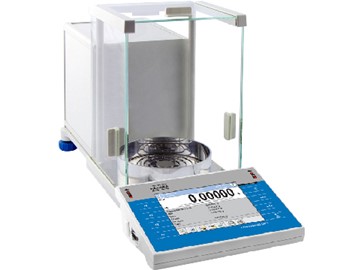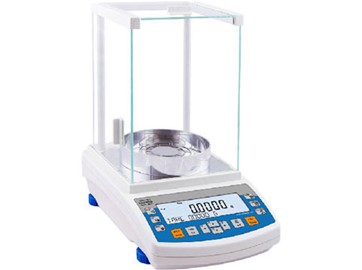One of the major things that happen in a laboratory is measurement. The mass of objects is measured before mixture and processing to know the quantity needed for procedures. If the measurement is important in laboratories, the importance of a laboratory balance cannot be overemphasized. Laboratory balances determine the mass of an object with extreme precision.it is used to measure an object’s mass to a very high degree of precision. However, the laboratory balance is frequently overlooked, as it sits in the corner of the lab and gathers dust. Dust and tiny particles can make these balances malfunction and get damaged. In this article, you will learn all about laboratory balance, how to use them, and proper care techniques to make them last longer.

The importance of use
Laboratory balances handle a variety of chemical compounds, solutions, and tests and must consistently deliver correct readings. These balances must be capable of accurately weighing test material and samples. Laboratory balances are necessary for quality control and performance testing. They are used to predict flaws and improve the quality of industrial operations. Although sensitive and a lot complex than the regular laboratory balance, the analytical balance is a very useful measuring equipment. Its precision ensures that samples of small weight are measured accurately. They are used in laboratories that deal with detailed precision like the pharmaceuticals, chemistry laboratories, and biochemical laboratories. Good care of your analytical balance will ensure it gives accurate results and lasts for a long time.
What are the types of Laboratory balances?
There are different types of laboratory balances. The choice of a laboratory balance depends on its use and the environmental conditions in which it will be used. The main types of lab balances used in laboratories are; Analytical balance (320g – 0.0001g), Microbalance (6g – 0.000001g), Ultra microbalance (6g – 0.0000001g) and Top-pan balance (200g – 0.001g),
Analytical balance:
They are designed to measure small masses from around 320g to 0.0001g. Analytical balances are for super-sensitive processes and procedures where precision is required. They are the gold standard for laboratory balances and the most common. It consists of: Balance pan, Tare button, Level indicator, Power button, Display
How do Laboratory Balances work?
Analytical balances are usually electromagnetic balances, they measure weights using electromagnetic force. The weight of the mass measured is countered by a force that the electromagnetic servomotor generates. Since the electrical current required to generate that force is proportional to the mass, with appropriate calibration, it is used to calculate the mass. The mass is then displayed on the display screen. Because of the use of electromagnet, the balance when switched on, cannot be used immediately. A period of idle time allows the electromagnetic field to stabilize before use.

User manual
There are step-by-step working principles that must be followed to ensure that the analytical balance produces the most accurate measurement. These steps are as follows.
- Check and adjust the level of the balance. The first step in setting your analytical balance is making sure that there is no tilt or twist in the balance. The bubble must be adjusted to the center of the inner circle.
- Reset the balance by pressing the re-zero or tare button.
- Place the sample to be measured by opening one of the transparent shields and gently putting it on the pan.
- Ensure that the sample is sitting well on the balance pan.
- Close the shield and check the display for measurement.
- Factors that affect the measurement of an analytical balance
- Temperature: Convection currents from hot or cold objects can cause variation in readings. Also, it takes time for balances to level up to laboratory temperatures.
Type of substances:
Some samples may hinder precise measurement due to their type. Efflorescence, hydroscopic and hygroscopic substances keep losing and gaining moisture thereby, affecting the reading.
Movement of Air:
Although the draft shield prevents air movement across the pan, it takes time for the air within the draft shield to stabilize after the door is closed. Reduction of airflow entering the draft shield helps to prevent variation in temperature inside the draft shield.
- Precautions and care to take note during the use of your analytical balance
- Position your balance on a leveled platform.
- Keep the balance from an area of constant interference by air, water, or humans.
- Do not place a magnet close to the balance as a magnetic substance will affect your reading.
- After each usage, clean the balance.
- If you aren’t going to utilize the balance soon, turn it off.
- If the balance is not in use, it should be kept in a room that is between 18 and 20 degrees Celsius.
- When touching the plate, use gloves to avoid introducing dust or particles to the balance pan.
- Avoid storing the balance in a wet environment or direct sunlight. Humid air wreaks havoc on measuring results and contributes to deterioration. Sunlight, on the other hand, can trigger instrument enlargement.
Cleaning and maintenance
Regular cleaning of the balance is important to keep it in good shape. Dusting and wiping off the surfaces prevents rust and interference in measurement. The manual of the analytical balance should be thoroughly read for options of cleaning substance. Scheduled maintenance and servicing also help to detect and fix problems as they arise.
How to buy balances
There are very many manufacturers and sellers in the industry. But it is important that you follow these steps:
Warranty- Choose the one who will give you responsibility for a variety of things
Service – Choose a company that provides service on the products
Reliability – Choose a company with extensive experience and years of experience in the field










